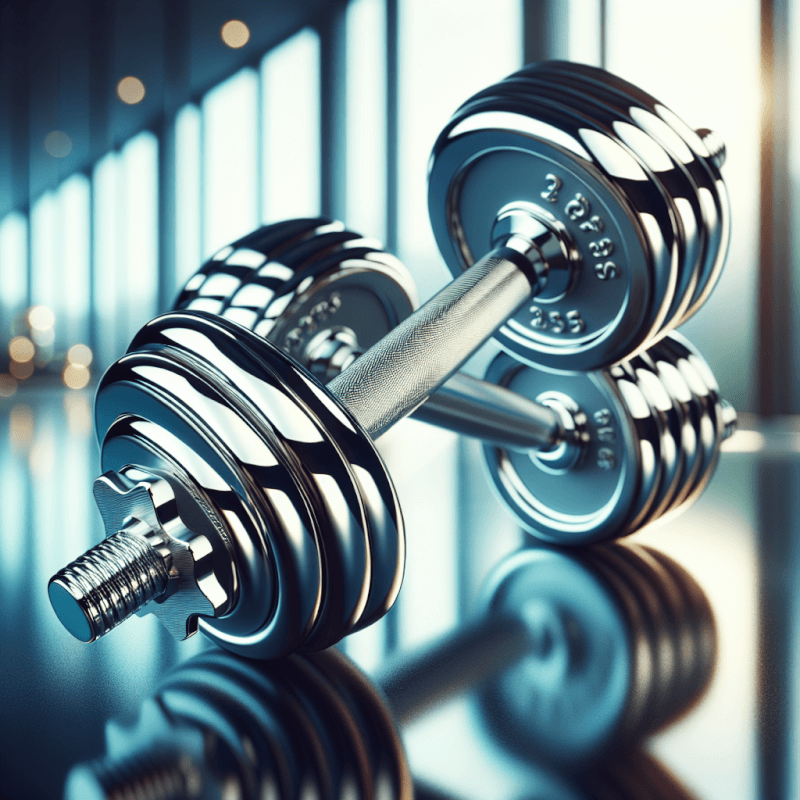Are you a woman over the age of 50 looking to stay fit and healthy? Look no further! In this article, we have curated a workout plan specifically designed for women in this age group. Whether you are a fitness enthusiast or someone just starting out on their fitness journey, this plan will cater to all levels of experience and help you achieve your fitness goals. So grab your workout gear and get ready to embark on a journey of strength, flexibility, and overall well-being!
Cardiovascular Exercise
Cardiovascular exercise, also known as cardio or aerobic exercise, is an essential component of any workout plan for women over 50. It helps improve heart health, increase lung capacity, and boost overall fitness levels. When choosing the right exercises, it is important to consider ones that are low-impact and easy on the joints. Walking, swimming, cycling, and dancing are all excellent options for cardiovascular exercise.
To reap the maximum benefits, aim for at least 150 minutes of moderate-intensity cardio exercise per week. This can be divided into smaller sessions of 30 minutes, five days a week. However, you can also opt for more frequent but shorter workouts if it suits your schedule better. Remember, consistency is key when it comes to cardiovascular exercise.
Before starting your cardio workout, it is crucial to warm up your body to prevent injuries and prepare your muscles and joints for the movements to come. A proper warm-up can involve light aerobics or dynamic stretches that target the major muscle groups. After completing your workout, make sure to cool down by stretching and allowing your heart rate to gradually return to normal.
Strength Training
Strength training is a vital aspect of any workout plan for women over 50. It helps preserve muscle mass, increase bone density, and improve strength, making everyday activities easier. Selecting the right exercises is crucial to ensure you target all the major muscle groups. Focus on compound exercises that work multiple muscles simultaneously, such as squats, lunges, push-ups, and rows.
Proper form and technique are essential when engaging in strength training exercises. It is crucial to maintain good posture, engage the correct muscles, and avoid any jerky movements. If you’re new to strength training or unsure about proper technique, consider working with a fitness professional who can guide you through the exercises and help you get the most out of your workout.
For optimal results, aim to do strength training exercises at least two days a week, targeting all major muscle groups. Perform 8-12 repetitions of each exercise, gradually increasing the weight or resistance as your strength improves. Remember to take rest days between strength training sessions to allow your muscles to recover and rebuild.

Flexibility and Stretching
Flexibility not only improves overall fitness but also helps alleviate muscle tension, improve posture, and prevent injuries. Engaging in regular stretching exercises can enhance joint range of motion and promote better mobility. There are two main types of stretching: dynamic and static stretching.
Dynamic stretching involves moving parts of your body through a full range of motion, gradually increasing intensity. It is particularly beneficial as part of a warm-up routine before engaging in other exercises, as it helps prepare your muscles and joints for the movements to come. Static stretching, on the other hand, involves holding a stretch for a prolonged period to improve muscle flexibility and relax tension.
Incorporating yoga or Pilates into your workout routine can be an excellent way to enhance flexibility. These mind-body exercises not only promote flexibility but also improve balance and body awareness. There are various recommended stretches you can incorporate into your routine, such as hamstring stretches, calf stretches, and shoulder stretches. Hold each stretch for 15-30 seconds, breathing deeply and maintaining good form.
Balance and Stability
Maintaining balance and stability becomes increasingly important as we age. Incorporating balance exercises into your workout routine can help improve proprioception and reduce the risk of falls. Older women, in particular, can benefit from exercises that target the core, legs, and hips to strengthen the muscles responsible for balance.
Yoga and Tai Chi are fantastic options for improving balance and stability. These practices focus on body awareness, deep breathing, and slow, controlled movements that engage multiple muscle groups. They also help improve flexibility and promote relaxation.
Using balance props, such as stability balls or balance boards, can also be beneficial. These tools challenge your stability and engage core muscles, further enhancing balance. Start with basic exercises, such as single-leg stands or heel-to-toe walks, and gradually progress to more challenging movements as your balance improves.

Joint Health and Mobility
As we age, our joints may become stiffer and less mobile. However, engaging in regular exercise can help maintain joint health and prevent stiffness. Low-impact exercises are particularly suitable for older women, as they place less stress on the joints while still providing numerous benefits.
Walking, swimming, cycling, and using an elliptical machine are all great low-impact exercises that promote joint health and mobility. These activities allow you to move your joints through a full range of motion without putting excessive strain on them.
Performing stretches specifically targeting joint health can further enhance mobility. Gentle range-of-motion exercises, such as shoulder circles and ankle rotations, can be incorporated into your warm-up routine. Additionally, maintaining a healthy, balanced diet and considering joint supplements can provide the essential nutrients needed to support your joint health.
Bone Health and Osteoporosis
Osteoporosis is a condition characterized by weakened bones and an increased risk of fractures. It is particularly common in women over 50 due to hormonal changes that occur during menopause. However, engaging in weight-bearing exercises and resistance training can help maintain bone density and reduce the risk of osteoporosis.
Weight-bearing exercises involve activities where your feet and legs support your body weight. Walking, jogging, dancing, and hiking are all excellent weight-bearing exercises that can help strengthen your bones. Aim for at least 30 minutes of weight-bearing exercises most days of the week.
Resistance training, such as lifting weights or using resistance bands, is another effective way to promote bone health. These exercises work against gravity and put stress on your bones, stimulating them to become stronger and denser. Aim to include resistance training exercises at least two days a week, targeting all major muscle groups.
In addition to exercise, it is crucial to ensure you get adequate calcium and vitamin D in your diet. Both nutrients play a vital role in maintaining bone health. Calcium-rich foods, such as dairy products, leafy greens, and fortified cereals, combined with vitamin D sources like sunlight or supplements, can help support your bone health.

Mind-Body Exercises
Incorporating mind-body exercises into your workout routine can be highly beneficial for overall well-being, stress reduction, and mental health. As women over 50 often face increased stress and anxiety, practices like mindful meditation, breathing techniques, tai chi, or qigong can provide a sense of calm and relaxation.
Mindful meditation involves focusing your attention on the present moment without judgment. It can be done seated or lying down, and even just a few minutes a day can lead to reduced stress levels and increased mental clarity. Breathing techniques, such as deep diaphragmatic breathing or alternate nostril breathing, can also help calm the mind and promote relaxation.
Tai chi and qigong are ancient Chinese practices that combine slow, flowing movements with deep breathing and mental focus. These exercises help improve balance, flexibility, and overall body awareness, while also reducing stress and promoting relaxation.
Modifications and Precautions
Listening to your body is crucial when engaging in any exercise routine, especially as you age. Pay attention to any discomfort or pain and make appropriate modifications to exercises if needed. For example, if you have knee pain, you may need to modify squats by using a chair for support or choosing a different exercise altogether.
If you have any pre-existing injuries or medical conditions, it is essential to adapt exercises accordingly. Consult with a healthcare professional or work with a qualified fitness professional to create an exercise plan that suits your specific needs and limitations.
Working with a fitness professional can also provide guidance and ensure you are performing exercises correctly and safely. They can help design a tailored workout plan, monitor your progress, and offer modifications or adjustments as necessary.
Finally, do not forget the importance of rest and recovery. Giving your body time to rest and heal is essential for preventing overuse injuries and allowing your muscles to rebuild and grow stronger. Make sure to include rest days in your exercise routine and prioritize getting enough quality sleep.

Nutrition and Hydration
A well-rounded workout plan for women over 50 should not overlook the importance of proper nutrition and hydration. As our bodies age, our metabolism slows down, making it essential to pay attention to caloric needs and nutrient intake.
Ensure you are consuming enough calories to support your activity level and maintain a healthy weight. As a general guideline, most women over 50 need about 1,800-2,400 calories per day, depending on their individual needs and activity level. However, it is vital to listen to your body’s hunger cues and adjust accordingly.
Protein and fiber are two essential nutrients for women over 50. Protein supports muscle growth and repair, while fiber promotes digestive health and helps maintain a feeling of fullness. Incorporate lean sources of protein, such as poultry, fish, beans, and tofu, into your meals, and aim for a variety of fiber-rich foods, including whole grains, fruits, vegetables, and legumes.
Staying hydrated is also crucial for overall health and optimal workout performance. Aim to drink at least eight glasses (64 ounces) of water per day, or more if you are engaging in intense physical activity or sweating profusely. Electrolyte balance is equally important, especially if you are engaging in prolonged, vigorous exercise. Consider including electrolyte-rich foods or low-sugar sports drinks to replenish electrolytes lost through sweat.
Eating a balanced diet that includes a variety of nutrient-dense foods from all food groups is key to providing your body with the nutrients it needs to support your exercise routine and overall health.
Building a Consistent Routine
To make the most of your workout plan, it is crucial to build a consistent routine that suits your schedule and preferences. Setting realistic goals is the first step in creating a routine that you can stick to. Consider what you want to achieve, whether it’s improving strength, increasing flexibility, or reducing stress. Break down your goals into smaller, achievable milestones that you can track and celebrate along the way.
Creating a weekly schedule can help you stay organized and make exercise a priority. Determine how many days a week you will work out, and allocate specific times for each exercise session. Treat these sessions as non-negotiable appointments with yourself and honor them as you would any other commitment.
Accountability and motivation are essential for maintaining consistency. Find a workout buddy or join a fitness community to help you stay motivated and accountable. Consider tracking your progress and celebrating milestones to stay motivated along your fitness journey.
As your needs, abilities, and goals change, be prepared to adjust your workout plan accordingly. Reassess your routine every few months and make any necessary modifications to keep challenging your body and prevent plateauing.
In conclusion, a comprehensive workout plan for women over 50 should include cardiovascular exercise, strength training, flexibility and stretching exercises, balance and stability training, joint health and mobility exercises, bone health and osteoporosis prevention, mind-body exercises, modifications and precautions, proper nutrition and hydration, and building a consistent routine. By incorporating these elements into your fitness routine, you can optimize your health, well-being, and fitness at any age. Remember to always listen to your body, consult with a healthcare professional when needed, and enjoy the journey towards a healthier, stronger you.



